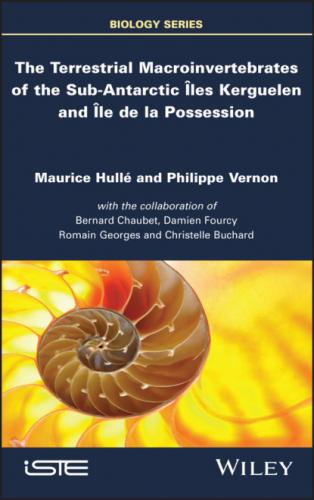Figure 1.7. Direction of the strongest winds (data from Météo-France)
1.2. Landscapes
Macroinvertebrates live mainly in low-elevation areas, which present four major types of landscape: sea-edge, grassland, wetland/mire and fellfield/rock (Davies and Greene 1976). Buildings and huts are also a habitat for some invertebrates.
1.2.1. Sea-edge
The seaside habitats (Figure 1.8) may consist of bare rocky areas such as pebble beach, blocks or shore platforms. They can be also covered with Crassula moschata or with coastal meadows, where native plants such as Leptinella plumosa, Pringlea antiscorbutica or Poa cookii dominate. Introduced plants such as Taraxacum officinale and Poa annua can also be locally abundant. These habitats are under the direct influence of marine inputs that are stranded algae. This oceanic input constitutes a very important food resource for terrestrial fauna. It is also the area occupied by colonies of seabirds and marine mammals whose feces, carrions and broken eggs are a major source of food for invertebrates.
The small coastal cliffs that are covered with vegetation harbor a significant diversity of invertebrate species. These are probably the richest environment for macroinvertebrates (Figure 1.9).
Figure 1.8. Sea-edge habitats (photos: M. Hullé)
Figure 1.9. This littoral cliff at Pointe Suzanne (Îles Kerguelen), covered with Pringlea antiscorbutica, Leptinella plumosa, Poa cookii and Poa annua, was home to 18 different invertebrate species such as the spiders Myro kerguelenensis, Neomaso antarcticus, the moth Embryonopsis halticella, the beetles Meropathus chuni, Bothrometopus brevis, Ectemnorhinus viridis, Merizodus soledadinus, Cartodere nodifer, the flies Amalopteryx maritima, Apetaenus litoralis, Anatalanta aptera, Calycopteryx moseleyi, Fucellia tergina, Psychoda parthenogenetica, and the aphids Rhopalosiphum padi and Myzus ascalonicus (photo: M. Hullé)
The seaside is the exclusive habitat of some species such as the weevil Palirhoeus eatoni and the flightless flies Apetaneus enderleini and Paractora dreuxi.
1.2.2. Grasslands
Grasslands (Figure 1.10) are present everywhere from the coast and up to 200 m a.s.l. These may be either almost monospecific grasslands with native plants such as Acaena magellanica, Leptinella plumosa or Azorella selago or introduced plants like grasses or dandelions. There are also mixed grasslands where native plants are in competition with one another or with introduced species. The monospecific meadows of Leptinella plumosa are coastal or supra-littoral, those of Acaena magellanica occupy the whole height and cover a large part of the slopes and those of Azorella selago are situated at higher altitudes and can develop up to 700 m a.s.l.
The meadows can be mixed with the rocky habitats. All the intermediaries between soil completely covered with vegetation and bare soil are possible. In the same way, grasslands may be very wet or very dry with plants in water deficit. Finally, coastal meadows can be heavily trampled by marine animals.
The invertebrate fauna of grasslands depend on plant composition, the proportion of area covered by vegetation or rocks and the water status of the soil. Introduced species such as the spider Tenuiphantes tenuis and the aphid Myzus ascalonicus may be plentiful. There is also the small native spider, Crozetulus minutus.
1.2.3. Wetlands and mires
The high humidity and rainfall, especially on Île de la Possession and the western part of the Îles Kerguelen, lead to the presence of numerous wetlands, rivers and lakes (Figure 1.11). Valley bottoms and slopes can be particularly soggy and oozing, making walking difficult. Native plants like Acaena magellanica, Agrostis magellanica, Callitriche antarctica, Uncinia compacta, Juncus scheuchzerioides and Ranunculus biternatus easily cope with this soil moisture. There are also bryophytes and liverworts.
These areas are the domain of some earthworms, spiders, Diptera like chironomids and black flies, and some aphids.
1.2.4. Fellfield and rocks
Fellfield is a widespread habitat from 100 m a.s.l. and occasionally below (Figure 1.12). It can be more or less drained and covered with vegetation such as the cushion plant Azorella selago and grasses like Poa kerguelensis. There are some weevils of the genus Bothrometopus and Ectemnorhinus, moths of the genus Pringlea and spiders of the genus Myro. It is the exclusive habitat of certain species such as the endemic sting bug Phthirocoris antarcticus. Rock walls, scree and rocky blocks are also habitats for some invertebrates including weevils and spiders.
Figure 1.10. Grasslands (photos: M. Hullé)
Figure 1.11. Wetlands and mires (photos: M. Hullé)
Figure 1.12. Fellfield and rocky habitats (photos: M. Hullé)
Figure 1.13. Buildings and huts (photos: M. Hullé, unless otherwise stated)
1.2.5. Buildings and huts
Base buildings and field huts are important habitats, especially for introduced species (Figure 1.13). These are, for example, flies such as Fucellia tergina and those belonging to the family Carnidae, and spiders such as Tegenaria domestica, Steatoda grossa and S. triangulosa.
The lands in the immediate vicinity of the bases host more introduced species than the more distant lands. The bases, which concentrate human activity and receive most newcomers, are the main introduction points of non-native species that need to acclimatize there before spreading.
All greenhouses were decommissioned in 2009 following the establishment of a national nature reserve but, in the past, these have probably played an important role in the acclimation phase of some introduced species. This was without doubt the case for aphids which, today, are among the most invasive species.
1.3.
